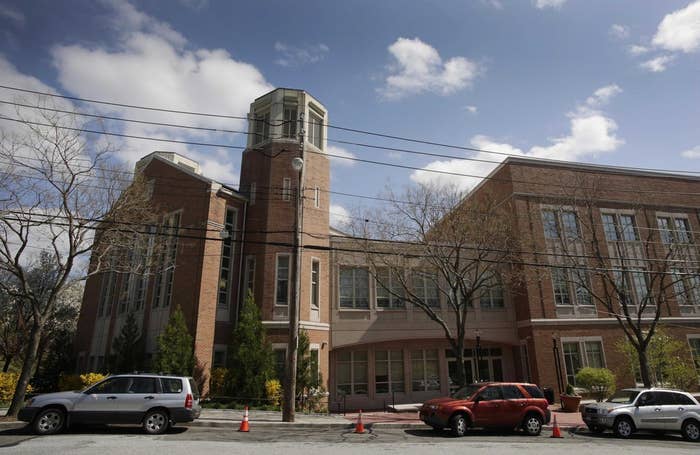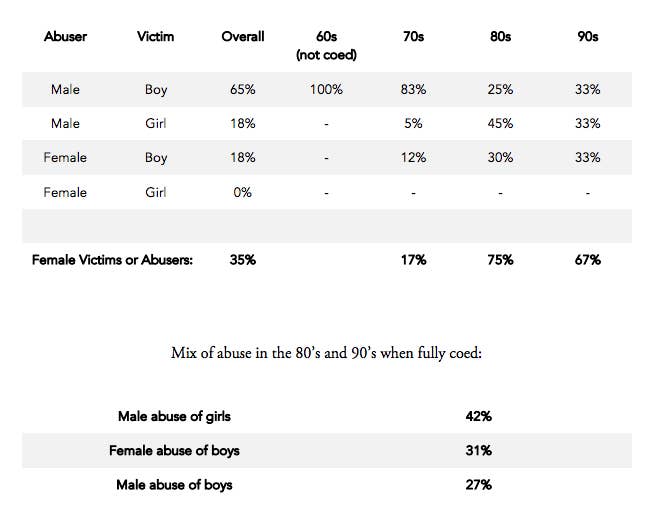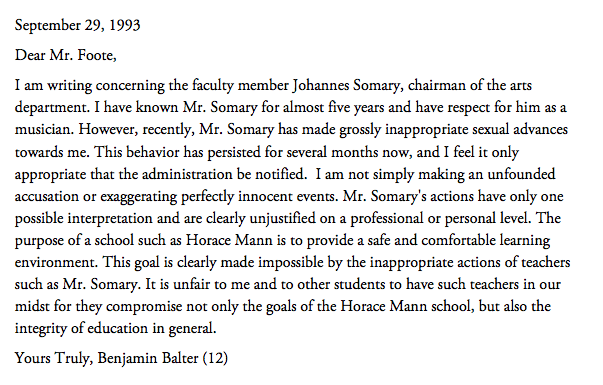
A report released Wednesday provides a thorough new look at the allegations of sexual abuse at New York's tony Horace Mann School, where dozens of alumni have come forward with harrowing stories from their childhoods.
In 2012, an investigation published by The New York Times Magazine by former student Amos Kamil alleged that teachers had sexually abused students at the Bronx prep school for decades. A follow-up investigation by the Bronx District Attorney's Office found "a systemic pattern of alleged abuse" stretching from the 1960s to the 1990s — all cases unable to be prosecuted because of the statute of limitations. The revelations left the school facing lawsuits and scrambling to manage its image and money.
Wednesday's report was compiled by a "loosely-affiliated group of alumni volunteers" led by the Horace Mann Action Coalition, a nonprofit group formed in 2012 to respond to the newly revealed scandal. In March 2013, the group found that "64 students had been sexually abused by 22 Horace Mann staff members from the 1960s through the 1990s," far more than the Bronx District Attorney's office, which announced two months later that its investigation had included 25 "victims of alleged abuse" and "12 separate alleged abusers."
The report includes no contemporary allegations of abuse, but argues that the school has "abetted and sustained" a "culture of secrecy" around its past.
After the scandal broke, said Horace Mann '81 alum Robert Boynton, it became clear that the school only "really wanted to deal with this as a monetary thing," and the alumni group moved to investigate Horace Mann on its own. The report took three years and cost between $90,000 and $100,000 to produce, Boynton said. (The alumni volunteers weren't paid — though compensated contributors included a former judge who wrote the report's recommendations, a Harvard University case writer who formed the report's narrative, and retired New York Police Department investigators who interviewed alumni and former faculty.)
Horace Mann didn't participate in the report and hasn't supported any other independent investigations, nor has it launched its own investigation into its past, despite calls for it do so. As the report states in its introduction, "Literally everything we now know about sexual abuse at Horace Mann has come from individuals and organizations outside the school."
The report includes timelines and testimonies and a particularly troubling section on individual alleged abusers: there's the man who taught English at Horace Mann from 1980 to 1991, who admitted in 2014 (via a faxed letter to the alumni group) to having an "intimate relationship" with a middle schooler during his tenure; there's the cross-country coach who later told The New York Times that sex with Horace Mann students "was very spontaneous and casual, and it did not seem really wrong"; there's the guidance counseling department head who called a student's rebuffing of his physical advances "self-destructive behavior." Within these sections are interviews with and information from the allegedly abused students and witnesses — sourced from media interviews given over the last few years, as well as the Horace Mann Action Coalition's own members and investigators, and even "victim chat boards."
Though Boynton is a journalism professor at New York University, he said the 130-page document he shepherded is more than a reconstruction of events through this mix of original reporting and aggregation. It's meant to "use this terrible series of events to create something that's going to be positive in the future" — a study that schools and departments of education can learn from, Boynton said.
The report goes on to describe a complicated — and, for the school, quite expensive — mediation process, which multiple insurers refused to participate in, reportedly because Horace Mann "prohibited" any follow-up investigations, requiring them to "destroy all documents after the meeting." The process was capped off by current headmaster Thomas Kelly saying he wouldn't support an independent investigation despite recommendations from the mediators. It would "ruin the school's finances, and without evidence, would only be slanderous," the headmaster said, according to the school newspaper.
More than anything, the alumni report attempts to keep the conversation about Horace Mann alive. There are no "smoking guns," Boynton said — no unveiled conspiracy. Rather the report is a documentation of "small cowardly decisions" that led a startling amount of abuse reports to go unreported to authorities.
"People at all different levels didn't want to rock the boat or create any bad publicity," Boynton said, "And that has ruined a lot of lives."
From the report, an analysis of victims separated by gender and decade:

"The impression that the abuse at HM was almost exclusively male-boy is incorrect, probably a result of the early emerging accounts," the report states.
A 1993 letter detailing abuse, from one student to the headmaster:

After receiving this letter, the then-headmaster called the faculty member and the student's mother — a science teacher at Horace Mann — into his office, according to the report, citing the original New York Times Magazine story. The report also describes at least four other abuse allegations against the same faculty member that came before this one.
"Though no further action was taken in 1993, Somary was notified several years later that he could no longer travel with students, unchaperoned, after the school received another report of student abuse," the report reads.
Somary taught at the school until 2002. In 2009, the student who wrote this letter killed himself. Three years later, Foote described to the Times the administrative culture at the time of the student's allegation: "H.M. was sure it was above everybody else. Nobody wanted anything to change."
